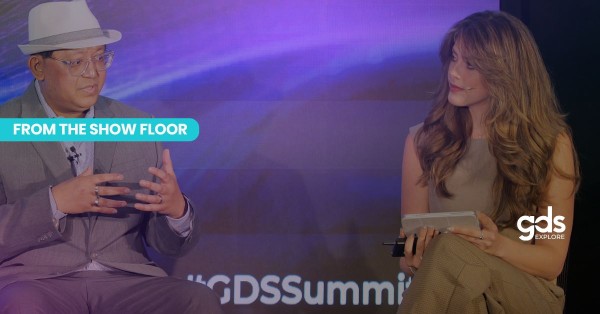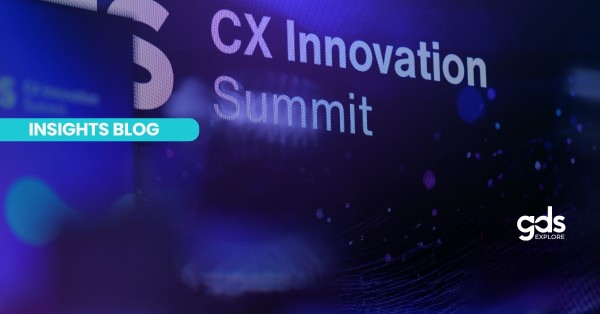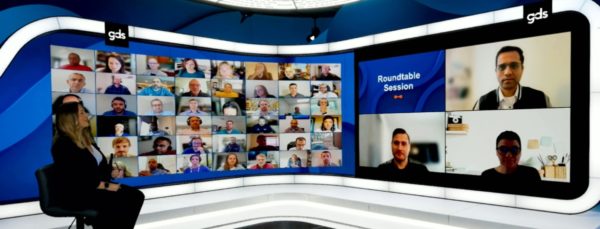Business writer, Larry Senn, otherwise known as the ‘Father of Corporate Culture’ once said: “Culture is not an initiative. Culture is the enabler of all initiatives.” If we, as business leaders, apply that sentiment to transformation initiatives, we’re encouraged to look internally to our workplace before we embark on ambitious journeys.
At GDS Group’s CX EU summit, Business Transformation Strategy Leader and Global Chief Marketing Executive, Tracie Gildea, explored how to nurture talent to maximise their potential and the related impact that can have on the customer.
In brief:
- Culture is the key to enabling all initiatives and should be addressed before transformation
- Businesses in various industries are undergoing disruptions and need to address culture for lasting transformation
- Four key areas for successful transformation: commercialisation, impact on business, learning and skills, and organisation
- Achieving a culture where everyone can thrive is a significant accomplishment
- Technology was used to improve customer insights, reduce friction, and automate processes
- CX transformation is an ongoing journey as expectations evolve
“It’s hard to find a business that isn’t going through a transformation. All sorts of industries are being disrupted.
“You can’t be successful with a lasting transformation that doesn’t address the culture,”
Tracie Gildea – Business Transformation Strategy Leader and Global Chief Marketing Executive
“Being part of a well-established company that is being disrupted by technology, you have to be very purposeful and strategic to transform into a growth company that has the right to play, and the right to win, with its customers.”
There’s immediate pressure on businesses to become technology companies. However, Gildea makes it clear the culture should be addressed first. She shares a case study of a B2B service company she worked for.
“We had a three-to-four-year transformation, developed a clear vision and added talent in to make that mission achievable. We were a very traditional, analogue company. But by augmenting with SaaS technology and addressing the underlying needs, we were able to reduce the friction for customers, shift the portfolio mix to higher margins and create new business solutions.”
Gildea achieved this by addressing four key areas:
1. Commercialisation:
Moving from bespoke analogue services to scalable solutions. This was achieved by making CX a differentiator, with user-centred and accessible design and personalisation across the journey, automation, and segmentation.
2. Impact on business:
Building lasting value creation and generating active customer insights. Solving customer problems and reducing friction through products, technology, marketing, and service experiences.
3. Learning and skills:
Addressing the talent and knowledge gap and improving technology literacy. This can be achieved by recruiting diverse technology talent, an employer branding strategy and equipping leadership across the organisation to communicate the type of talent wanted on board.
4. Organisation:
Creating collaboration between disparate teams with strong technical foundations.
One great achievement, shares Gildea, was creating a modern CX and marketing team that was fully integrated and had a digital mindset at its core. And the ultimate win?
“We created a culture where anyone from any background could be their true selves at work and thrive.”
Tracie Gildea – Business Transformation Strategy Leader and Global Chief Marketing Executive at Stanley Black & Decker, Inc.
When it came to the technology side, the company had some work to do, says Gildea. “Having active insights from customers wasn’t something we had access to. We created a Customer Data Platform that could talk to marketing and products to see the data we needed. We also employed on-site chat to capture conversations – the majority of which were customer service conversations. From that, we started tracking sentiment, service tickets and reduced friction, delivering a better employee and customer experience.
“This led us to automation. We had access to millions of data points so had to start automating the employee and customer experience. During the pandemic, our customers’ businesses were shut down and needed our help in new ways. Customers found themselves in endless loops and not getting the answers they needed. We took a new approach through Natural Language Processing and learning what customers were talking about. We started small and expanded across geographies to analyse for intent to drive our chat experience.”
Gildea closed with the following takeaways:
1. Set the vision:
It’s important to define your strategy early, decipher your new purpose and what CX means to your organisation.
2. Get ready to race:
Companies that do the greatest amount of transformation in the first year have the greatest likelihood of it sticking. It can mean self-funding or bringing disparate legacy technologies together initially.
3. Build for scale:
Hire the best talent that you can at every level. Start small if budgets don’t allow and teach and empower staff to deliver on CX objectives.
4. Story tell:
Make sure your team is trained, can communicate insights around the organisation and share the impact on business.
And her final thought: “I don’t think in CX transformation we’ll ever see a day we’ve made it to the promised land. It is a continuous journey where expectations continue to evolve.”
Conclusion
In conclusion, addressing culture is essential for successful transformation initiatives in today’s disruptive business landscape. Companies must recognise the importance of nurturing a supportive and inclusive culture before embarking on ambitious journeys. By focusing on key areas such as commercialisation, impact on business, learning and skills, and organisation, businesses can drive lasting value creation and improve customer experiences.
Embracing technology as a tool for insights, automation, and enhanced communication plays a crucial role in achieving transformation goals. The key takeaways include setting a clear vision, acting swiftly, building for scale by hiring top talent, and effectively communicating the impact on business. However, it is important to note that customer experience transformation is an ongoing journey, as expectations continue to evolve. By continuously adapting and staying attuned to changing customer needs, businesses can stay competitive and thrive in the dynamic marketplace.
Looking for ways to accelerate your sales cycles, engage in industry conversations, and achieve better outcomes? Look no further than our Summits – our unique 3-day digital event experiences that bring together senior executives and solution providers.
Our recent CX EU digital summit, which Tracie gave the closing keynote, ended with an impressive average content attendance of 95% and a meeting completion rate of 124% against target.
Partnering with GDS Group can help you get in front of the right people at the right time.
Don’t miss out on the opportunity to attend one of our unforgettable event experiences that promise to leave you feeling inspired and empowered.
Check our calendar now and join us. We can’t wait to see you there!









